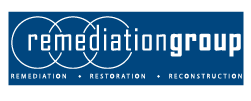The State of Industrial Real Estate
The industrial real estate sector finds itself at a fascinating inflection point in the second quarter of 2025. After years of pandemic-driven euphoria that sent demand soaring and fundamentals into overdrive, the market is now experiencing what industry veterans are calling “the great recalibration” — a return to more sustainable patterns that reveals both the resilience and complexity of modern logistics networks.
The numbers tell a story of measured adjustment rather than dramatic decline. Despite muted net absorption, leasing activity improved 4.2% year-over-year to 117.5 million square feet in the second quarter, according to JLL’s latest market dynamics report. Yet this surface-level stability masks profound shifts happening beneath — from the dominance of third-party logistics providers to the accelerating flight toward quality facilities, from manufacturing reshoring to the ripple effects of evolving trade policies.
The Flight to Quality Revolution
Perhaps the most significant trend reshaping industrial demand isn’t captured in headline absorption figures but in where that absorption is occurring. Buildings constructed before 2000 accounted for more than 100 million square feet of negative absorption in 2024, while those completed after 2022 posted more than 200 million square feet of positive absorption, according to CBRE’s market outlook.
This bifurcation reflects more than tenant preference — it represents a fundamental shift in how companies view their distribution networks. Modern facilities offer the clear heights, advanced HVAC systems and robust power infrastructure necessary for automation and artificial intelligence integration. More importantly, they provide the employee amenities that have become essential for attracting and retaining warehouse workers in an increasingly competitive labor market.
Today’s tenants prioritize facilities with power capacity sufficient for automation systems, dedicated areas for employee break rooms and training spaces, and infrastructure to accommodate electric vehicle charging for their fleets. These requirements have become necessities in lease negotiations. The shift reflects changes in both technology adoption and workforce expectations, as companies recognize that modern facilities are essential for operational efficiency and employee satisfaction.
The implications extend far beyond individual leasing decisions. Older facilities, particularly those lacking modern specifications, face an increasingly challenging path to competitiveness. This dynamic helps explain why the vacancy rate increased 20 basis points to 7.5%, a temporary adjustment rather than a troubling trend according to JLL’s analysis, while certain markets with newer inventory remain tight.
Third-Party Logistics: The New Market Makers
The rise of third-party logistics providers represents one of the most dramatic structural changes in industrial real estate demand patterns. Third-party logistics (3PL) leasing accounted for 16.5% of all activity in the second quarter according to JLL, and CBRE projects 3PLs’ share of overall industrial leasing activity at or near 35% in 2025.
This surge isn’t merely cyclical — it reflects fundamental changes in how companies approach supply chain management. The combination of tariff uncertainties, geopolitical tensions and the ongoing need for supply chain flexibility has pushed more businesses toward outsourcing their distribution operations. As CBRE notes, utilizing third-party logistics allows for more inventory flexibility, a key component to retailer success in times of uncertainty.
The third-party logistics expansion has particular geographic implications. Chicago led the country in third-party logistics leasing activity in the second quarter, followed by New Jersey and Richmond, according to JLL data. These markets offer the combination of labor availability, transportation infrastructure and proximity to major population centers that third-party logistics operators require for efficient hub-and-spoke distribution models.
The Manufacturing Renaissance
Buried within broader leasing statistics lies evidence of a quiet but significant transformation: manufacturing tenants had the highest quarter of leasing activity to date, accounting for 6% of total leasing volume in the second quarter. While this may seem modest in absolute terms, it represents the leading edge of a reshoring movement that could reshape industrial demand patterns for years to come.
The manufacturing surge is particularly pronounced in specialized sectors. JLL’s research shows that electric vehicle and battery plants represent the majority of manufacturing projects currently under construction, followed by semiconductors. Federal initiatives supporting domestic production continue to incentivize this trend, creating a substantial pipeline of large-scale manufacturing facilities.
Manufacturing operations present dramatically different infrastructure requirements compared to traditional warehouse tenants. These facilities typically demand three-phase power systems, specialized ventilation for industrial processes, and robust data infrastructure including fiber optic capabilities to handle complex manufacturing data loads. While traditional warehouse tenants might consume 30 watts per square foot, modern manufacturing operations often require 150-200 watts per square foot minimum, necessitating significant electrical infrastructure investments.
Chicago exemplified this trend in the second quarter, leading the country in manufacturing leasing with 1.4 million square feet, largely comprised of construction and building materials companies in spaces under 250,000 square feet. This suggests that manufacturing reshoring isn’t limited to massive battery plants and semiconductor fabrication facilities — it’s occurring across a broad spectrum of industries and facility sizes.
Tariff Tremors and Trade Realities
The industrial sector’s evolution cannot be understood without acknowledging the profound impact of evolving trade policies. Economic headwinds, delayed occupancy and a wave of large bankruptcies contributed to quarterly absorption reaching just 15.6 million square feet, representing the lowest figure since 2010 according to JLL.
The tariff environment has created both immediate challenges and longer-term strategic opportunities. West Coast markets, traditionally benefiting from Asian import flows, have faced particular pressure. Some markets experienced significant negative absorption as companies delayed expansion decisions or consolidated operations in response to tariff uncertainties.
Conversely, markets positioned to benefit from nearshoring trends are seeing increased interest. CBRE identifies emerging opportunities along Interstate 35 and Interstate 29 corridors, particularly in San Antonio, Austin, Dallas-Fort Worth, Oklahoma City, Kansas City, Des Moines and Minneapolis, as companies seek distribution facilities with direct access to Mexico border crossings.
Supply Pipeline: Caution and Calculation
The development pipeline reflects the market’s measured response to changing demand patterns. Second quarter deliveries reached 59.5 million square feet, which is the lowest since the first quarter of 2019, reflecting cautious developer response to market conditions. More significantly, the development pipeline has continued to contract to a sustainable level, with just 241 million square feet currently under construction, the lowest figure observed since the third quarter of 2016.
This supply discipline represents a marked departure from the speculative development surge of recent years. The shift toward build-to-suit projects is particularly notable: Build-to-suit and owner-user projects now comprise 34.5% of construction activity, with build-to-suit reaching a record 20% of the total construction pipeline according to JLL’s analysis.
Build-to-suit development has fundamentally altered project management and vendor relationships in the industrial sector. These customized facilities often require specialized systems such as clean room environments, custom automation installations, and unique operational workflows that standard contractors cannot accommodate. Property management companies report maintaining relationships with 40% more specialized contractors to service these unique operational requirements, reflecting the growing complexity and specialization within the industrial real estate market.
The implications extend beyond supply numbers to market dynamics. With less speculative development coming online, tenant leverage in lease negotiations may gradually shift back toward landlords, particularly for modern, well-located facilities.
Regional Powerhouses and Emerging Markets
Geographic patterns in industrial demand continue to evolve, driven by demographic shifts, infrastructure investments and changing trade flows. Core markets like the Inland Empire, Dallas-Fort Worth, Atlanta, Chicago and the New Jersey-Pennsylvania corridor maintain their dominance, benefiting from established infrastructure and central geographic positions.
However, emerging markets are capturing an increasing share of activity. CBRE highlights that labor availability and demographic shifts will continue to be paramount when making leasing decisions, with the Southeast continuing to capture a disproportionate share of industrial growth.
Secondary markets are experiencing a fundamental shift in tenant expectations, with companies placing unprecedented emphasis on workforce amenities. Facilities in markets like Kansas City and Nashville increasingly feature fitness centers, upgraded break areas, and enhanced parking facilities as employers compete for skilled workers. In these markets, property features that support employee retention have become as critical as traditional industrial specifications like dock doors and ceiling height, reflecting the tight labor market’s influence on facility design and tenant decision-making.
The Southeast’s advantages extend beyond labor costs to include business-friendly regulatory environments, substantial infrastructure investments and proximity to growing population centers. States like Georgia, Tennessee and the Carolinas continue to attract both domestic expansions and international companies establishing their first U.S. operations.
Capital Markets: Resilience Amid Uncertainty
Despite operational challenges, industrial capital markets have demonstrated remarkable resilience. Transaction volume in the first half of 2025 totaled $36.6 billion, marking a 3% increase over the prior year period according to JLL. This stability reflects continued investor confidence in industrial fundamentals, even as individual market dynamics vary significantly.
The debt environment has also shown improvement. JLL tracked nearly 250 lenders quoting on industrial loans in the second quarter of 2025, up more than 60% from the market trough in the fourth quarter of 2023. The narrowing of debt spreads has helped offset rising index rates, allowing pricing to stabilize across most markets.
The Path Forward
As the industrial sector navigates this period of recalibration, several themes emerge as likely drivers of future performance. The structural shift toward supply chain resilience, accelerated by recent geopolitical events, continues to favor domestic manufacturing and distribution capabilities. E-commerce growth, while moderating from pandemic peaks, hit a record-high 23.2% in the third quarter of 2024 and is expected to reach 25% by year-end 2025 according to CBRE, providing ongoing support for warehouse demand.
The flight to quality shows no signs of abating, creating opportunities for owners of modern facilities while challenging those with obsolete inventory. Technology integration, from automation to artificial intelligence, will continue driving demand for facilities with the power infrastructure and clear heights necessary to support advanced operations.
Perhaps most importantly, the market appears to be finding its equilibrium after years of extraordinary volatility. Leasing activity should stabilize at just above 800 million square feet in 2025 according to CBRE — a level that remains well above pre-pandemic norms.
This recalibration, rather than representing retreat, may signal the industrial sector’s maturation into a more sustainable growth trajectory. Companies with strong balance sheets are increasingly viewing current uncertainties as opportunities to secure strategic locations that position them for future growth once trade landscapes stabilize.
For industrial real estate professionals, this environment demands both caution and confidence — caution in understanding the complexities driving tenant decisions, and confidence that the fundamental forces reshaping global supply chains continue to favor strategic industrial assets in the right locations.
Interested in learning about the state of play of the CRE industry? Read the full State of Play publication with this link.
Thank you to our State of Play Sponsors:






To stay up to date on news and resources such as this and other topics of importance to the real estate industry, subscribe to the free CRE Insight Journal Newsletter using this link.
Comments are closed.









